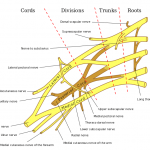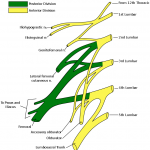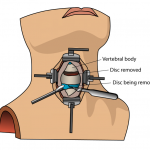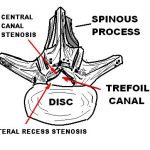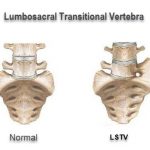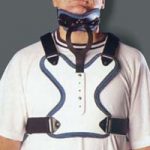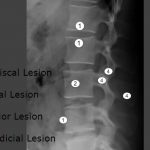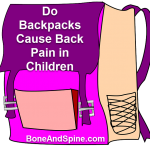Brachial plexopathy is an affection of brachial plexus. Plexopathy refers to a disorder affecting nerves, blood or lymph vessels in the regions of the brachial or lumbosacral plexus, the two major plexus in the body. The symptoms of plexopathy include pain, loss of motor control, and sensory deficits. It should be kept in the mind that the […]
Spine
Lumbosacral Plexopathy – Causes and Management
Lumbosacral plexopathy is an injury to the nerves in the lumbar or sacral plexus. Lumbosacral plexopathy can be caused by many disorders. The prevalence of lumbosacral plexopathies is unknown and is much less common than brachial plexopathies. Risk factors vary based on cause. Relevant Anatomy The lumbar and sacral plexuses together make lumbosacral plexus which […]
Transitional Vertebra Definition and Types
A transitional vertebra at any junction is characterized by features retained from two adjacent regions in the vertebral column. For example in the lumbosacral transitional vertebra, there is an L5 vertebra that can become like S1 vertebra or S1 can leave the sacrum and become an L6. As we know from our knowledge of the […]
Adjacent Segment Disease Causes and Treatment
Adjacent Segment Disease is defined as new degenerative changes at a spinal level adjacent to a surgically treated level or levels in the spine, leading to symptoms of radiculopathy, myelopathy, or instability. It is denoted as ASDis This condition may or may not result in any symptoms. The term adjacent segment degeneration (ASDeg) is used […]
Neurogenic Claudication – Risks, Pathophysiology and Treatment
Neurogenic claudication, also called pseudoclaudication, is a common symptom of lumbar spinal stenosis due to causing impingement or inflammation of the spinal nerves Claudication refers to an impairment in walking or pain, discomfort, numbness, or tiredness in the legs that occurs during walking or standing and is relieved by rest. The word claudication comes from the Latin claudicare meaning ‘to limp’. Thus, it is […]
Spinal Stenosis – Causes, Types, Symptoms and Treatment
Spinal stenosis indicates a pathological condition causing the compression of the contents of the canal, especially neural structures. The term stenosis means a narrowing of the caliber of an orifice or a tube. Spinal stenosis, therefore, defines a narrowing of the bone channel occupied by the spinal nerves or the spinal cord. This is usually […]
Bertolotti Syndrome – Causes and Treatment
Bertolotti syndrome is the presence of a variation of the fifth lumbar vertebra with a large transverse process, either articulated or fused with the sacral basis or iliac crest, producing a chronic, persistent lower back pain. It may also cause isolated L4/5 disc disease. Bertolotti described a unilateral and bilateral enlargement of the transverse process […]
Cervical Orthoses – Collars and Post Appliances
Cervical orthoses could be prefabricated or custom made. Prefabricated cervical orthoses are of two basic types: collars and post appliances. There are a lot of other custom made designs. Apart from serving a reminder to the wearer to restrict head and neck motions, depending on design and fit, a particular orthosis may impose forces to position the head, […]
What is Spinal Tumor Syndrome?
Spinal tumor syndrome is not a condition in itself. It is a clinical label for the patient’s condition with many differentials in the offering. Most often, the term is used in cases of spine tuberculosis where there is no apparent osseous lesion. To understand spinal tumor syndrome one must first know about the typical presentation […]
Backpacks and Back Pain- Tips to Use Backpacks in Children?
Back pain in children is not that common and often may be associated with underlying disorders. However, recent evidence has suggested backpacks in school-going children to be a cause of back pain. Yes! backpacks and back pain could be related. The school going does involve carrying backpacks filled with books and materials and is continuing […]
